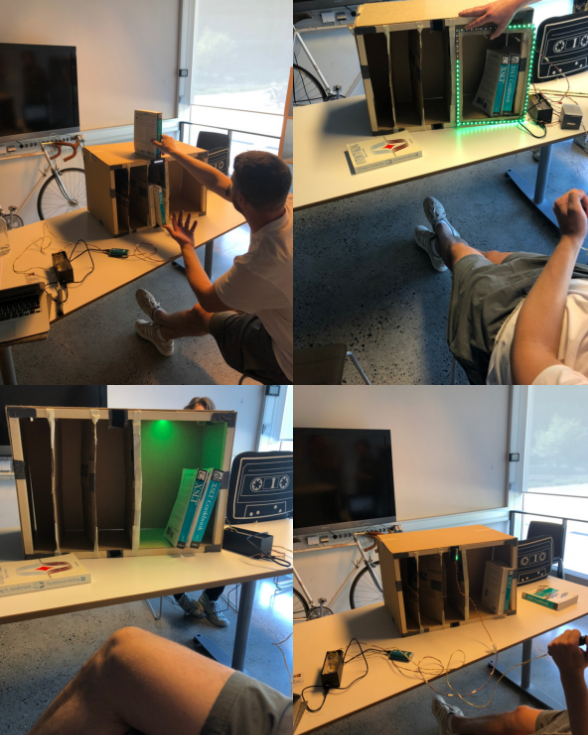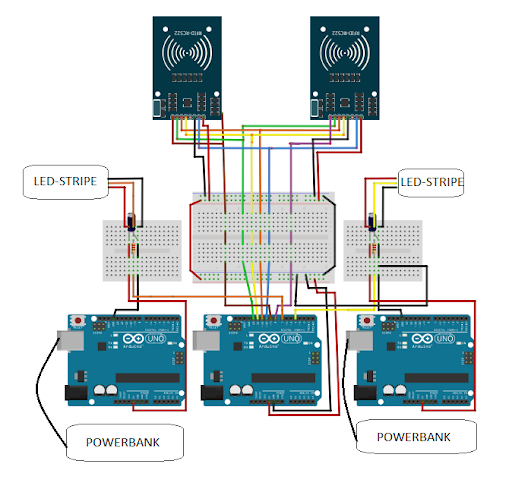Main components in the prototype:
Spade
This is a project in the subject IN1060 User-oriented design at my second semester at the University of Oslo. Our task was to plan and execute a project in which we designed and built a tangible digital prototype (without the use of a screen), for a selected user group. We chose public libraries as the research domain and developed a digital prototype for the public libraries' existing retrieval shelf solution.
The project focused mainly on UX-design but with a user-oriented design angle, where the users were in focus. To gain insight into the early phase, we conducted observations at the various public libraries as well as in-depth interviews with domain experts about existing solution at the libraries. Next, we conducted semi-structured interviews and presentation of sketches to a selected user group. After interviewing domain experts for the second time, we concluded based on users' needs to develop a digital solution for the existing solution when retrieving books.

Sketches of the book retrieving system.
The project consisted of seven iterations, we designed a modular prototype that allowed us to add new functionality and modify the prototype each iteration. An iteration of the project consisted of development of the prototype based on user needs, which we obtained during user testing. We had a selected user group, who followed us throughout the project. Each iteration was completed with an evaluation of the iterations prototype together with the user group.

Evaluation with user group.
My role in this project was technically responsible, it involves writing the code for the technical solution. The solution is developed with the Arduino Uno microcontroller, the code is written in Arduino's own programming language, with a syntax who looks something like a crossing between Java and C++. As I had no experience with Arduino it brought with it some challenges, like knowing if an error was programmatic or hardware related. Besides the coding I have connected the entire circuit that makes up the solution. Furthermore, in line with the other members of the group, I conducted observations, data collection in the form of interviews and user tests iteratively.

Final prototype.
The final prototype design is a standard shelf equipped with two RFID readers, one reader integrated into the bookshelf partition and reading the book ID, as all the books at the libraries has individually RFID-tags. The second RFID reader is a card reader that reads the RFID card ID (which is to illustrate a loan card), the card reader is equipped with a led strip that flashes green if your book is in the shelf and red if it is not there. If the book is in the shelf and the correct loan card is registered, an LED strip light’s up which shelf section the book is in.

Prototype circuit.
It was a lot of fun to be thrown into such a project. It was educational to have such user-involved approach and I learned a lot about data collection, data analysis and user testing as well as how to work together in a team on a project. The role as technical responsible presented several challenges, especially getting three Arduino’s and two RFID readers to interact. The project was very motivating, and I learned a lot of programming, and about the power of using a microcontroller as a prototyping tool in UX-designing.
Here's the link to our project site : Project site